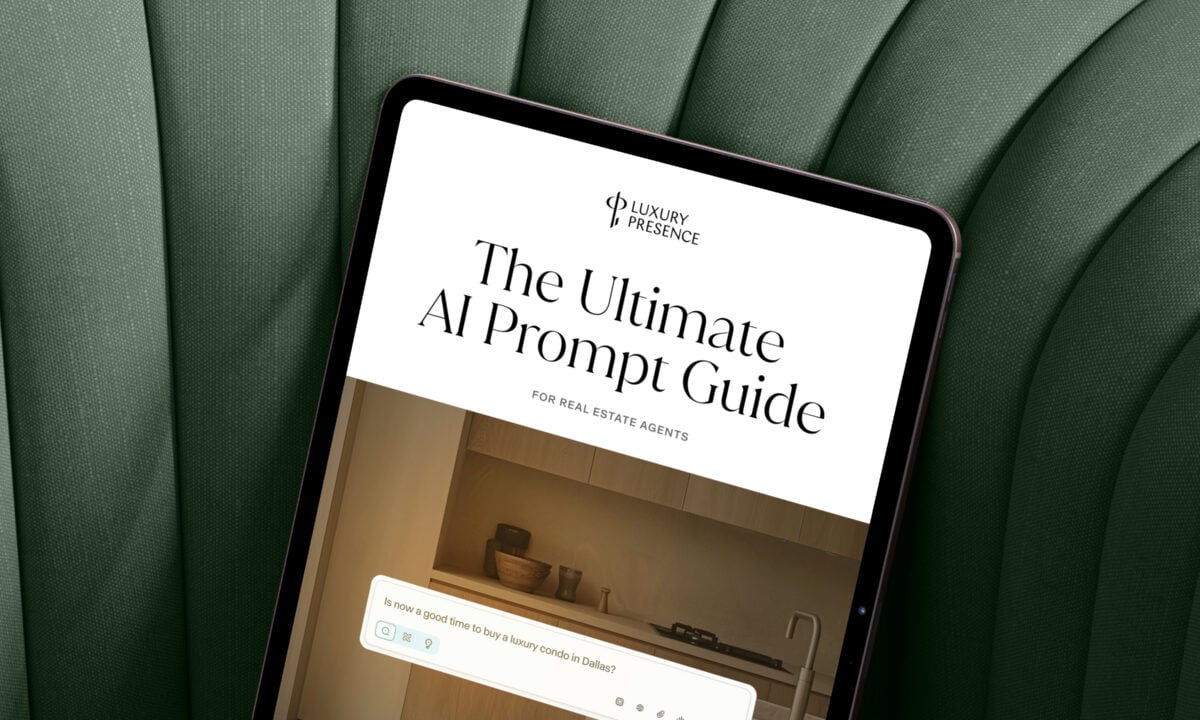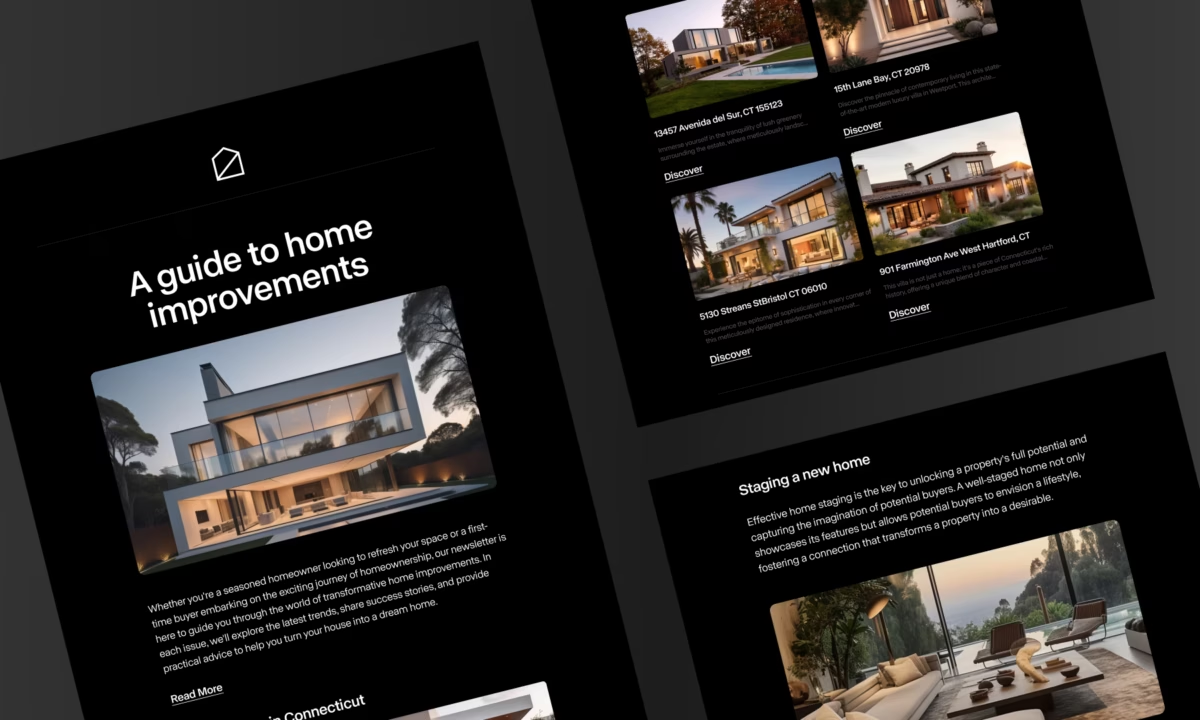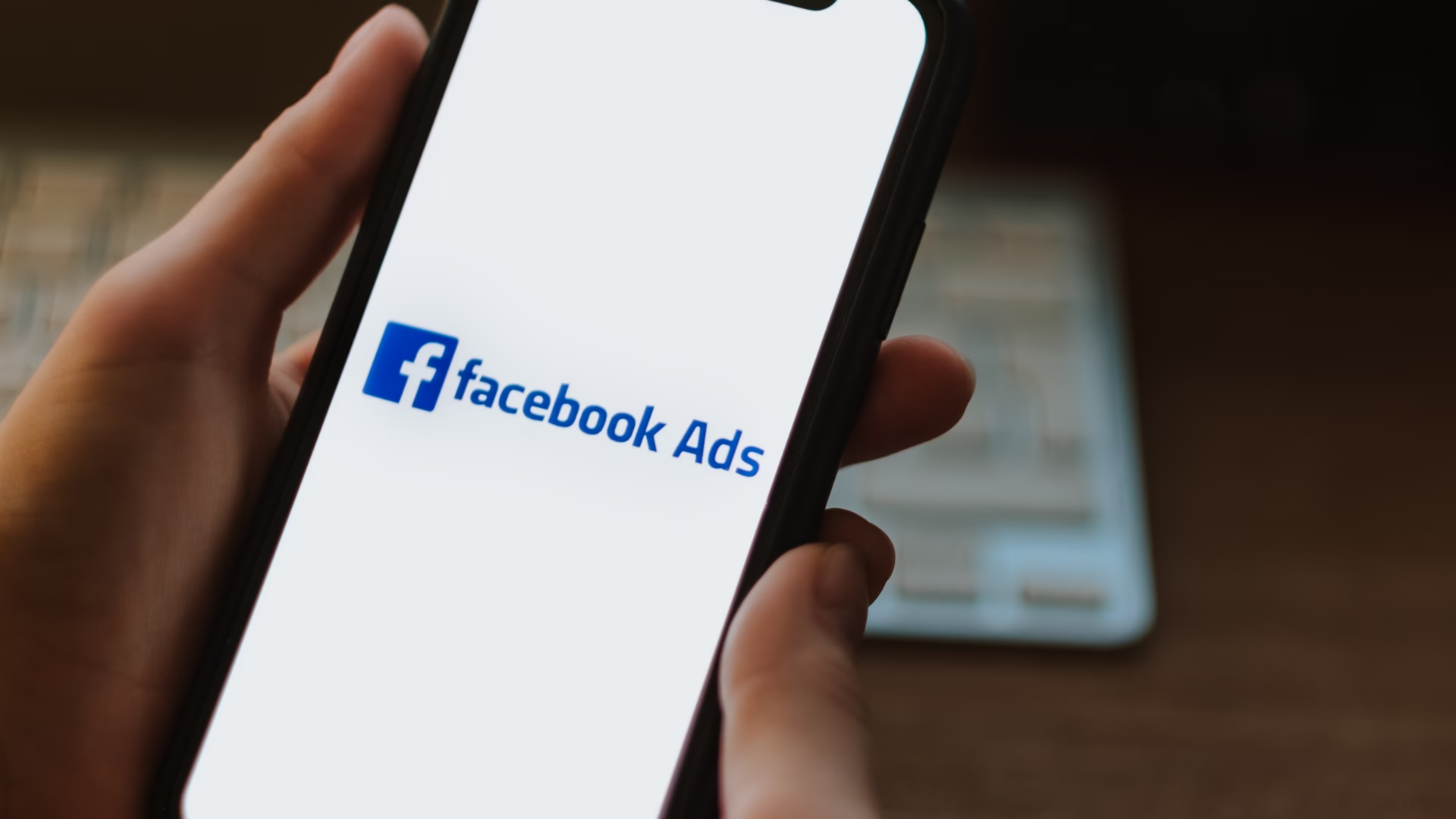
Advertising on Facebook can prove lucrative for your real estate firm, but it’s not without its hurdles. Here’s how three Luxury Presence clients found their audience with Facebook’s social media platform.
It’s no secret that Facebook, given the social media giant’s size and userbase, is an excellent place to advertise. It’s hard to ignore numbers that include 1.62 billion users visiting Facebook daily.
In the U.S. alone, among active users, 74% say they use it every day. And for those who think it’s a social media tool strictly for young individuals, consider that people 65 and older are its fastest-growing user base. On top of that, 74% of high-income earners are Facebook devotees as well.
Facebook Ads are the platform’s most prevalent advertising space. Until recently, it served as an effective, hyper-targeting tool for reaching your ideal audience. But there are challenges, including for those hoping to reach upscale, luxury real estate buyers.
No longer allowing certain advertising segments carte blanche, Facebook limits the ability for housing ads (along with employment and credit ads) to target audiences using age, gender, ZIP code, or “multicultural affinity.” Toss in the highly unique circumstances of engaging with homebuyers during a global pandemic, and needless to say, it takes some creativity to connect with your high-end market.
It’s within these conditions, however, that three Luxury Presence clients have found success with Facebook advertising in 2020. Let’s explore three case studies, including the challenges they faced, the developed solutions, and the positive outcomes that can help you with your next Facebook advertising campaign.
Case Study One: Lead Generation Amid a Pandemic
The COVID-19 pandemic presented many industries with business hurdles not previously seen in modern times. Real estate was no different, with lockdowns curtailing the heady spring season with few open houses and active buyers. On the surface, a Facebook ad campaign launched at the beginning of April—with the pandemic entering its most feverish stage—seemed ill-timed.

The Challenge
In a highly uncertain Toronto real estate market, how do you convince tepid buyers that homes are available, deals are being made, and conditions are ideal to purchase their own?
The Solution
After researching the Toronto market, it was determined a simple bullet point list would most easily extoll the many advantages of buying a home in the current climate.
The ad itself featured just three key points—historically low-interest rates, lower competition amongst buyers for homes, and indications that the market would quickly recover in the latter part of 2020 and into 2021. Overall, it sold the very real idea that the second quarter of 2020 was the time to make a move on a new home before the market recovered from the downturn.
The client also offered potential homebuyers a free phone consultation, including how to secure a low-interest rate in April or May.
The ad campaign carried the potential to reach 43,000 Facebook users, mainly in the tech, business, and finance fields, with an age range between 20 and 35 years old.
The Result
The campaign produced over 78,500 impressions, more than 1,800 clicks, and 114 Facebook leads—77 in April and another 37 in May. The cost per lead was $9.21, which translates into direct engagement with 114 potential buyers for a $1,050 ad campaign—all in the middle of a pandemic.
The key takeaway is that, when communicating potentially complex ideas or data that demands immediate action, you must make that information more accessible. Short, concise lists present your pitch clearly and make it easier for the target audience to act upon the information and your call to action.
Case Study Two: Develop Your Custom Audience
Facebook targeting restrictions hit the luxury real estate market particularly hard. Selective, high-end buyers most often know exactly what they want and are willing to wait for it. They also appreciate advertising and content that is directly pointed towards their wants and needs. When the first half of that equation is no longer an option, it’s time to get creative with the second half—content.t overcomplicating or overspending on your Facebook advertising initiatives.
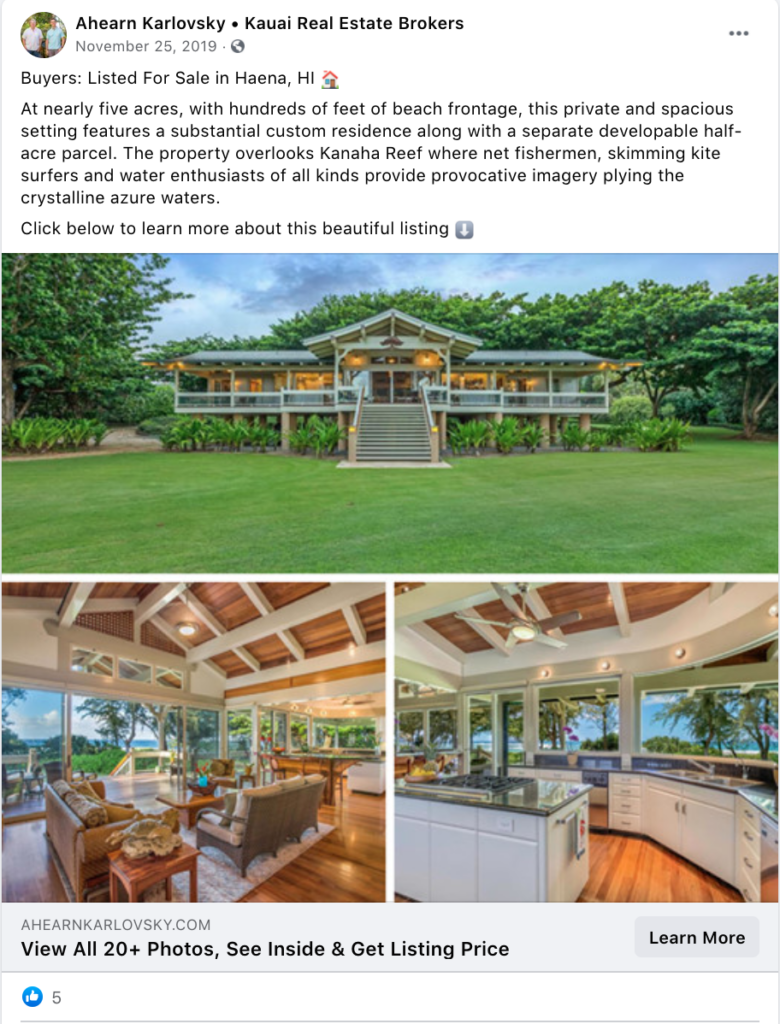
The Challenge
When you have hyper-specific properties—like those in Kauai, Hawaii, which appeal to wealthy individuals looking to purchase a second home—you’re attempting to market to a hyper-specific group. How do you work within the confines of restrictive advertising policies? Especially ones that may prohibit you from appealing directly to your target audience?
The Solution
Connecting with the desired audience required a two-pronged approach. Phase one necessitated identifying the right audience, without the usual assistance from Facebook’s demographic database.
Instead of targeting ads towards the client’s desired demographic, Luxury Presence broadly advertised a specific piece of content. A blog post with tips on buying in Kauai triggered certain interests among readers. It provided confidence that those who click the link were most likely the high-quality leads the client was after.
Drawing individuals into a marketing funnel through the blog post aided in identifying and narrowing the qualified leads. In phase two of the campaign, the affluent audience the client was seeking—those who clicked the blog post—were retargeted with lead generations that detailed a Kauai property for sale.
In addition, the demographic information provided by those who clicked the blog link in phase one allowed the client to craft a broader lookalike audience. With that data in hand, the target audience grew, increasing the number of potential leads without using additional resources.
The Result
Over the five-week campaign, 15 Facebook leads were generated at a cost per lead of $15.66. The only real parameters included couples living within Southern California who frequently traveled and were interested in luxury products.
Beyond those leads, the client was able to verify the core demographics of their target audience and expand the scope of the custom audience the original blog post created.
The critical factor in making this campaign work began with specific, high-quality content. Create relevant content—blog posts, neighborhood guides, property landing pages—and you’ll draw in the ideal audience without overcomplicating or overspending on your Facebook advertising initiatives.
Case Study Three: Selling a Lifestyle Instead of a Property
Again, Facebook’s ad restrictions were positioned to hinder another real estate ad campaign—this time in the beautiful, highly affluent Cameldale Estates community in Paradise Valley, Arizona. The good news is that Cameldale Estates, and similar, amenity-laden communities across the country, have a lot to offer prospective buyers beyond idyllic lots and estate homes.
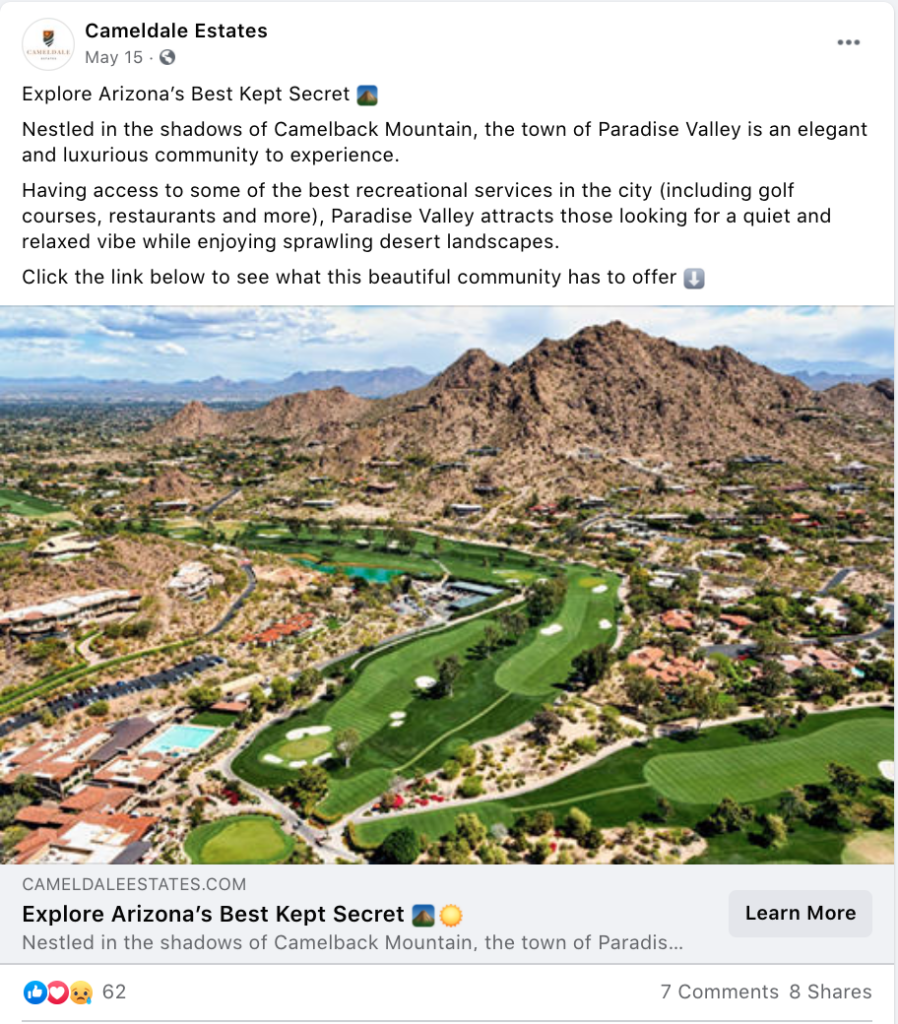
The Challenge
Facebook took away the ability to zero in on an audience’s interests when promoting a specific piece of real estate. The restriction severely limits the ability to espouse the attributes of a particular property on their platform, which, of course, is something of a big deal in real estate—particularly high-end luxury real estate.
The Solution
As you might have guessed, the community took center stage instead of a singular offering within the neighborhood. Phase one of the ad campaign included presenting the client’s ideal, affluent audience with the high standard of living that awaited them at Arizona’s best-kept secret—Cameldale Estates. This approach allowed the campaign to take advantage of Facebook’s massive demographic database without violating its new advertising rules.
Due to the community being the focal point of the campaign and not any one individual property, the potential audience was quite robust. It included a reach of 100,000 people and focused on those living in upscale areas and high-income ZIP codes, interests that included luxury real estate, and professions and job titles of rarified earners and those who owned multiple homes.
Similar to Case Study #2, upon clicking the ad in phase one, the individual was placed within the marketing funnel. Here, that custom audience was targeted with ads that not only expanded upon Cameldale Estate’s exclusive lifestyle, but provided details of the type of home available in the community.
Ultimately, by focusing on the lifestyle aspects of the community in phase one advertising, the campaign succeeded in filtering the serious, high-value buyers from the less interested onlookers without violating any Fair Housing laws or Facebook policies.
The Result
Overall, the campaign was a resounding success, resulting in 155 leads at a cost per lead of $4.95. That’s without mention of any actual property information in the initial ad.
Luxury homebuyers, perhaps more than any other segment, want more than just a fabulous home; they want a lifestyle to match. It’s an important point to remember when met with advertising roadblocks, such as with Facebook. But it’s also a technique that will spice up your advertising elsewhere.
Even with its more restrictive policies towards housing advertising campaigns, Facebook remains a viable source for leads. As evidenced in the three case studies above, even a small amount of creativity in how you approach your Facebook ads goes a long way. You’ll be rewarded with an equal amount of leads and audience engagement as you would have been before Facebook’s policy changes. In many cases, it just might prove even more lucrative.
